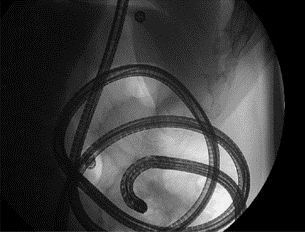Abstract
Osler Weber Rendu syndrome, synonymously Hereditary hemorrhagic telangiectasia, is a rare systemic disease with multiple-organ involvement. This genetic disorder inherits in an autosomal dominant fashion, with the incidence found closer to 1 in every 5,000 people. The condition can be diagnosed at any age and has an equal chance of affecting both males and females. A 74-year-old male, having a history of left hemiplegia, was admitted with a recent history of recurrent melena. An upper enteroscopy revealed bleeding telangiectasia in the proximal jejunum managed with hemoclips. The possibility of Osler Weber Rendu syndrome was considered as he developed bleeding recurrently. According to Curacao Criteria, a minimum of two out of four symptoms should be present to ratify the disease, and the presence of three symptoms makes a definite diagnosis. Since there is no cure for the syndrome to date, therapy's mainstay entails meticulous supportive care (focused on managing the manifestations). The disease is a type of arteriovenous malformation associated with the mutation in either endoglin (ENG) or activin A receptor-like kinase-1 (ACVRL1) genes. He was given an intraarticular injection of methotrexate in the left wrist hand because of small joint polyarthritis. The patient was symptomatically and clinically better on discharge. Novel treatment strategy includes bevacizumab and thalidomide though their use has not been clinically approved.
Full text article
Authors

This work is licensed under a Creative Commons Attribution-NonCommercial-NoDerivatives 4.0 International License.

